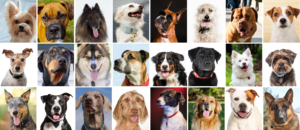To best understand this article in the context of the Breeds and Behavior literature, please see National Canine Research Council’s complete analysis here.
Stone, H. R., McGreevy, P. D., Starling, M. J., & Forkman, B. (2016). Associations between domestic-dog morphology and behaviour scores in the dog mentality assessment. PLoS ONE, 11(2), 1-14. doi: https://doi.org/10.1371/journal.pone.0149403.
National Canine Research Council Summary and Analysis:
This 2016 study was meant to build upon the (2013) McGreevy et al. study which used owner behavior reports to compare morphology and behavior, rather than breeds, per se. Stone, McGreevy, Starling, and Forkman (2016) used data collected through putting registered purebred dogs through a provocative behavior assessment, the Dog Mentality Assessment (DMA) instead of using owner reports of behavior. This distinction is our reason for including it, along with the fact that the dogs in the behavioral samples here were documented as registered purebreds, so the data weakness of unverified breed identification was avoided. However, this study suffers from the same weakness as McGreevy et al. (2013) in that the behavioral data used was not compared to the physical attributes of the actual dogs whose behavior was reported, but rather to averages collected from Australian show dogs of the target breeds (cephalic index) and from an unofficial dog breed website (height and weight).
This study made use of the Swedish database of more than 67,000 Swedish dogs of 45 breeds tested over a 17-year period at more than 200 testing sites by more than 300 testers. The DMA consists of 10 subtests in a fixed order, with 33 behavioral categories scored on a scale of 1-5. Examples of the stimuli employed in the various subtests include being greeted by a stranger, the presentation of loud metallic noise or a gunshot, people draped in sheets emerging from behind trees, attempts to play tug-of-war, and passive activity. Trained assistants record the dogs’ behavior on a standardized scoring sheet. This approach does eliminate potential owner bias but does not rule out experimenter bias. Dogs that do not complete the DMA (e.g., stopped due to fear or aggression, or owner opted out of gunshot trial) do not show up in the results which could potentially bias the data against more fearful dogs. (Relatedly, one study attempted to test convergent validity of the DMA with the C-BARQ owner survey, and some low convergence was found between the 2 instruments, although the validation effort failed with regard to behaviors categorized as aggression (Svartberg, 2005)).
Behavior on the DMA was analyzed with respect to canine morphology (cephalic index, height, bodyweight). A major weakness of this study is that behavior and morphological data were calculated from different samples and from unofficial breed descriptions. Skull measurements (cephalic index) were taken by averaging measurements of 12 Australian dogs registered as members of the same breeds. Inexplicably, the authors chose to calculate height and weight breed averages based on “standards” from an unofficial dog breed website. Behavioral measures, as mentioned above, were calculated from a separate large sample of Swedish dogs collected over a 17-year period that ended well before the Australian dogs’ heads were examined. Thus, correlations drawn between morphology and behavior are hypothetical, as the DMA tested dogs did not have morphological measures taken, and the degree to which their skull morphology conformed to the averages of dogs from another country, time period, and primarily from working rather than the show lines of the Australian dogs is unknown. How the DMA tested dogs conformed to the height and bodyweight averages from the unofficial dog breed website is also unknown. DMA results are provided to the Swedish Kennel Club, so one may infer that the dogs in that sample were indeed registered members of their respective breeds.
The authors reported behavioral differences between different body types; dogs of breeds the unofficial breed website “standards” described as relatively short exhibited more “aggression,” while dogs the same website described as taller were more affectionate, playful, and cooperative with humans according to the DMA results. On average, breeds whose “standard” (noted on the unofficial breed website) called for heavier dogs were bolder and more inquisitive while those described as lighter dogs were more cautious and fearful. The very questionable congruence between the 3 samples being compared, however, raised major questions about the findings.
Abstract and Link to Full Text of the Original Article:
https://www.ncbi.nlm.nih.gov/pubmed/26919495
Additional References:
McGreevy, P. D., Georgevsky, D., Carrasco, J., Valenzuela, M., Duffy, D. L., & Serpell, J. A. (2013). Dog behavior co-varies with height, bodyweight and skull shape. PLoS ONE, 8(12), e80529. doi: https://doi.org/10.1371/journal.pone.0080529
Svartberg, K. & Forkman, B. (2002) Personality traits in the domestic dog (Canis familiaris). Applied Animal Behaviour Science, 79:133–155.
Svartberg, K. (2005). A comparison of behaviour in test and in everyday life: evidence of three consistent boldness-related personality traits in dogs. Applied Animal Behaviour Science, 91(1), 103-128.
Page last updated July 17, 2019





